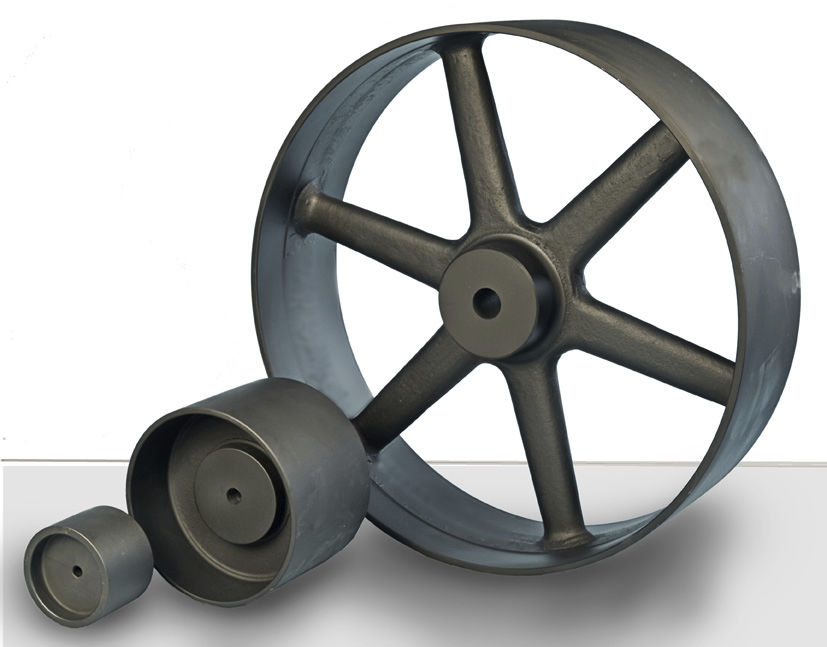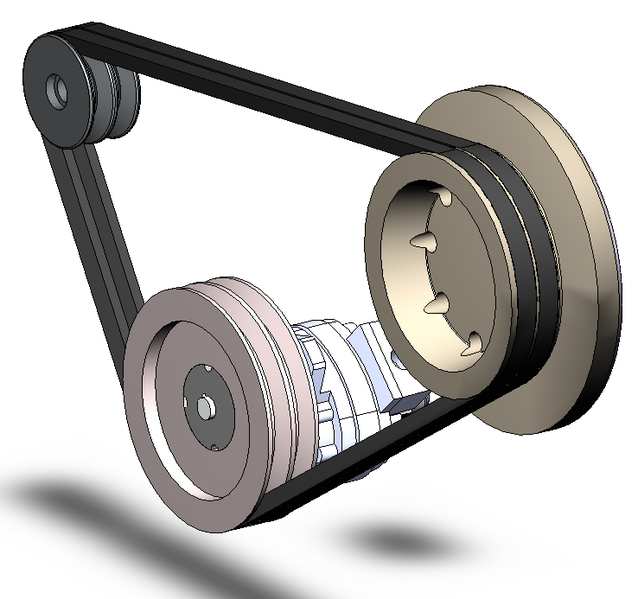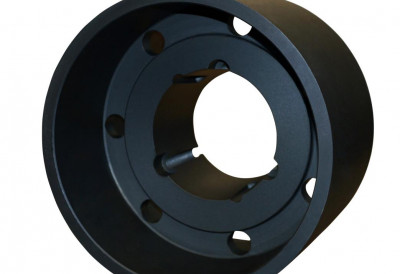Product Description
We can produce conveyor rollers of various standards, diameters, lengths, and types
Welcome to write to us
| Description | Fabrication Services flat belt idler pulley for belt conveyor |
| Application | Used in electric power, metallurgy,mine,coal, cement,steel,chemical, port, hydroelectric power and grain industries |
| Pipe/Tube/Shell | 1)Material:Q235 Steel 2)Diameter:219mm-3000mm 3)Length:500mm-5000mm,depends on the belt width of the conveyor |
| Shaft/Axis | Material:#45 Steel |
| Bearing | Big roving crack, deep groove ball with double sealing |
| Welding | Pipe and bearing housing with automatic welding |
| Surface | Smooth steel color surface, rubber lagging surface |
| Color | Red,green,blue or as require |
| Service life | More than 30,000 hours |
| Standard | GB,ISO,DIN,CEMA,JIS |
Our Pulley Features:
| Conveyor Pulley Test | 1. All butt welds shall be full Penetration 2. All welds to be full seal welds to prevent rust 3. Shell seam welds are submerged arc (SAW) 4. Includes stress relieving of shell prior to machining 5. Ultrasonic testing of all shafts 6. Drillings for Temperature probe / vibration analysis device 7. Remove all butts and sharp edges |
| Conveyor Pulley Shaft Selection | The major cause of conveyor pulley failure is excessive shaft deflection. The Conveyor Pulleys – ZheJiang HSCD Engineering department can perform Stress Analysis and Finite Element Analysis to maximize your conveyor pulley performance. |
| Conveyor Pulley Shell Material | Q345B Carbon Steel GR350 Carbon Steel ANSI 4140 Alloy Steel ASTM A514B Stainless Steel |
| Bearing House | SKF/NSK/FAG/INA/HRB/LYC, as customer request. |
| Conveyor Pulley Lagging | Plain rubber lagging, Herringbone and Diamond grooves are all available . Hot Vulcanised Durometer . Hardness 50-55-65 Shore A, M Grade . Oil Resistant, Heat Resistant FRAS |
| Comprising | •Drive pulley, Head pulley and Tail Pulleys •Take-Up Pulleys, •Snub pulley & Bend Pulleys •Self Cleaning Spiral Wing pulley & Drum Pulleys |
| Significant advantages | • The thick pulley shell absorbs more stress. • The large crown angle provides superior belt tracking capabilities. • True concentric machining provides: • maximum contact with the belt, • consistent belt content discharge, • less deflection of shaft, • less stress on the bearings |
| Available Conveyor Pulley Designs |
•Liveshaft or Deadshaft types. •Flat or crowned shell. •Taconite, labyrinth or speciality seals. •Oil or grease lubricated. •Self centering or low pressure lock element designs. |
In addition to the structural drum pulley advantages, we provide additional services with every conveyor pulley order:
• Engineering capabilities.(We can engineer and custom build pulleys to your requirements utilizing software tools such as Finite Element Analysis).
• In- house manufactured hubs and shafts.
• This ensures consistency and compatibility of components of the pulley.
• Reinforced Mine Duty pulleys are available.
• In- house assembly of complete pulley unit including: bushing, shaft, bearings and gear box.
• Dynamic or Static balancing upon request.
Besides we can manufacture the conveyor drum pulley according to the buyers’ requirements
What kinds of Conveyor Pulleys we can manufacture:
·Conveyor head pulley, Conveyor drive pulley, Conveyor bend pulley, Conveyor Tail Pulley
·Conveyor tension pulley, Conveyor snub Pulley, Conveyor Wing Pulley, Conveyor take up Pulley and so on
Our workshop
Our packaging
our products
Our certificate
Our contact
/* January 22, 2571 19:08:37 */!function(){function s(e,r){var a,o={};try{e&&e.split(“,”).forEach(function(e,t){e&&(a=e.match(/(.*?):(.*)$/))&&1
| Material: | Carbon Steel |
|---|---|
| Surface Treatment: | Polishing |
| Motor Type: | Frequency Control Motor |
| Installation: | Turning |
| Thickness of Rubber Surface: | 8mm 10mm 12mm 15mm 20mm |
| Diameter: | 159—2000mm |
| Customization: |
Available
| Customized Request |
|---|

Can flat belt pulleys be integrated into conveyor systems for material handling?
Yes, flat belt pulleys can be effectively integrated into conveyor systems for material handling. Here’s a detailed explanation:
Conveyor systems are widely used in industries for the efficient movement of materials from one location to another. Flat belt pulleys offer several advantages when incorporated into conveyor systems:
1. Power Transmission:
Flat belt pulleys are used as the driving pulleys in conveyor systems. They transmit power from a motor or an engine to the belt, enabling the movement of materials along the conveyor. The large contact area and grip between the pulleys and the belt ensure efficient power transfer, allowing for the transportation of various types of materials.
2. Load Capacity:
Flat belt pulleys are designed to handle different load capacities. They can be selected based on the specific requirements of the conveyor system, such as the weight and type of materials being transported. The pulley’s diameter and width are chosen to provide adequate support and load-bearing capacity for the belt.
3. Belt Tracking:
Proper belt tracking is crucial in conveyor systems to prevent belt misalignment and ensure smooth operation. Flat belt pulleys are designed with features such as flanges or guides to help keep the belt centered and aligned. This ensures that the materials are conveyed along the desired path without any disruptions or spillage.
4. Belt Tensioning and Adjustability:
Flat belt pulleys in conveyor systems are equipped with tensioning mechanisms to maintain the appropriate belt tension. These mechanisms, such as idler pulleys or tensioning screws, allow for easy adjustment of the belt tension to accommodate variations in load or belt stretch over time. Proper tensioning ensures efficient power transmission and prevents belt slippage.
5. Versatility:
Flat belt pulleys offer versatility in conveyor system design. They can be used in straight conveyors, curved conveyors, or inclined conveyors, allowing for the transportation of materials in various directions and angles. The flexibility of flat belts also enables efficient movement around pulleys of different sizes and configurations.
6. Maintenance and Replacement:
Flat belt pulleys in conveyor systems are relatively easy to maintain and replace. Regular inspection and maintenance of the pulleys, including checking for proper alignment and tension, can help prevent issues and ensure efficient operation. When replacement is necessary, flat belts and pulleys are readily available, minimizing downtime and optimizing material handling efficiency.
Consequently, flat belt pulleys are commonly integrated into conveyor systems for material handling due to their efficient power transmission, load capacity, versatility, and ease of maintenance. They are widely used in industries such as manufacturing, warehousing, mining, agriculture, and logistics.

What types of materials are commonly used for flat belt pulley components?
Flat belt pulleys are typically composed of various materials for different components to meet specific requirements. Here’s a detailed explanation:
1. Pulley Body:
The main body of a flat belt pulley is commonly made of durable and rigid materials such as:
- Steel: Steel pulleys offer excellent strength, durability, and resistance to wear. They are commonly used in heavy-duty applications where high load capacities and long service life are required.
- Cast Iron: Cast iron pulleys are known for their high strength and resistance to wear. They are often used in industrial applications where durability and reliability are essential.
- Aluminum: Aluminum pulleys are lightweight and have good corrosion resistance. They are commonly used in applications where weight reduction is a priority or in environments where corrosion is a concern.
- Plastics: Certain types of plastics, such as nylon or polyurethane, are used in pulleys where low weight, noise reduction, or chemical resistance is required. Plastic pulleys are often used in applications that involve delicate or sensitive machinery.
2. Hub:
The hub of a flat belt pulley, which connects the pulley to the shaft, is typically made of:
- Steel: Steel hubs offer high strength and reliable connection to the shaft. They are commonly used in heavy-duty applications.
- Aluminum: Aluminum hubs are lightweight and provide good corrosion resistance. They are often used in applications where weight reduction is important.
3. Surface Coating:
To enhance the performance and durability of flat belt pulleys, surface coatings or treatments may be applied. Some common coatings include:
- Zinc or Nickel Plating: These coatings provide corrosion resistance and improve the pulley’s appearance.
- Anodizing: Anodized coatings on aluminum pulleys increase their resistance to wear and corrosion.
- Powder Coating: Powder coating provides a durable and protective layer on the pulley surface, offering improved aesthetics and resistance to corrosion, chemicals, and abrasion.
It’s important to select the appropriate materials for flat belt pulleys based on factors such as the application’s load requirements, environmental conditions, desired lifespan, and cost considerations. Consulting with pulley manufacturers or suppliers can help in determining the most suitable materials for specific pulley components.

How do flat belt pulleys handle variations in load capacity and speed?
Flat belt pulleys are designed to handle variations in load capacity and speed in power transmission systems. Here’s a detailed explanation:
1. Load Capacity:
Flat belt pulleys can accommodate variations in load capacity by adjusting the tension in the flat belt. Increasing the tension in the belt helps to transmit higher loads, while reducing the tension allows for lower loads. The tension can be adjusted by adjusting the position of the pulleys or by using tensioning devices such as idler pulleys or tensioning screws. By properly tensioning the belt, flat belt pulleys can efficiently transmit power and handle different load capacities.
2. Speed Variation:
Flat belt pulleys can handle variations in speed by adjusting the pulley diameters. The speed ratio between the driving pulley and the driven pulley determines the speed at which power is transmitted. By using pulleys with different diameters, the rotational speed can be adjusted accordingly. For example, a larger pulley on the driving shaft and a smaller pulley on the driven shaft will result in increased speed, while a smaller driving pulley and a larger driven pulley will reduce the speed. By selecting the appropriate pulley sizes, flat belt pulleys can accommodate different speed requirements in power transmission systems.
3. Variable Speed Pulleys:
In applications where continuous speed variation is required, variable speed pulleys can be used. These pulleys, also known as stepless or variable pitch pulleys, consist of two conical pulleys that can move axially, changing the effective diameter of the pulley. By adjusting the position of the conical pulleys, the speed ratio can be continuously varied, allowing for precise control of the transmitted speed. Variable speed pulleys are commonly used in applications such as conveyors, fans, and certain types of machinery that require adjustable speeds.
4. Belt Material Selection:
The choice of belt material can also contribute to handling variations in load capacity and speed. Different belt materials possess varying levels of strength, flexibility, and wear resistance. By selecting the appropriate belt material based on the specific application requirements, flat belt pulleys can effectively handle variations in load capacity and speed. For example, high-strength materials may be chosen for heavy-duty applications, while more flexible materials may be suitable for applications with high-speed variations.
It’s important to note that while flat belt pulleys can handle variations in load capacity and speed to a certain extent, there are practical limits based on the design and capabilities of the specific pulley system. It’s crucial to consider the manufacturer’s specifications, operating conditions, and safety factors when determining the suitable load capacity and speed requirements for a flat belt pulley system.


editor by CX
2024-04-12
